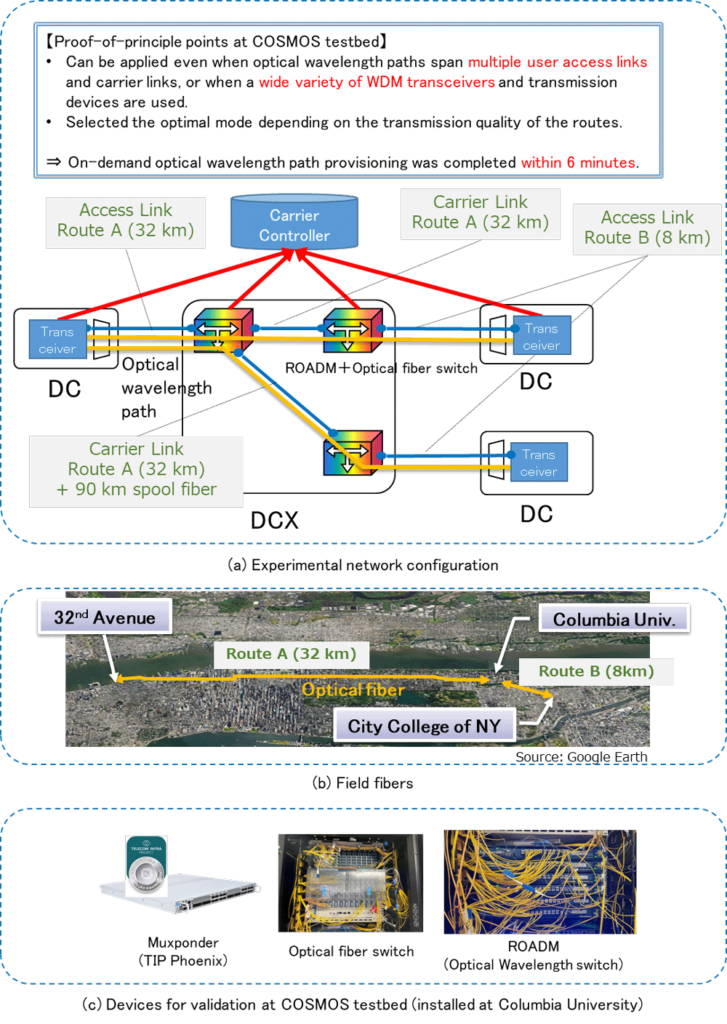Nippon Telegraph and Telephone Corporation (NTT) and NEC Corporation conducted a field demonstration of optical wavelength path provisioning technology based on IOWN APN architecture defined at the IOWN Global Forum for on-demand high-capacity/low-latency connections among data centers. The demonstration was conducted in the NSF COSMOS testbed with Columbia University, Duke University, and Trinity College Dublin and Politecnico di Torino.
With this technology, carriers can design and configure optical wavelength paths in several minutes using an algorithm that automatically estimates the quality of the optical wavelength path, which used to take skilled workers more than two to three hours. This is an essential technology to enable data center exchange (DCX) services (Figure 1), which are proposed by NTT, NEC, and others in IOWN, to provide high-capacity, low-latency data center interconnection among distributed data centers by connecting necessary points with optical wavelength paths in an on-demand manner. The testbed demonstration is illustrated in Figure 2.
NTT presented a paper based on the result at Europe’s largest international conference on optical communication technology in Scotland (49th European Conference on Optical Communications (ECOC)), where it was selected as a best paper, and at the Telecom Infra Project’s (TIP) Fyuz event in Spain.




